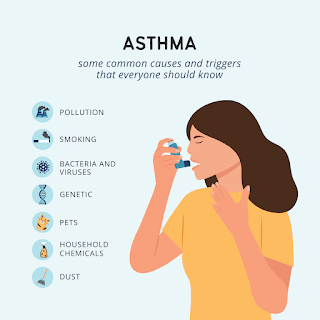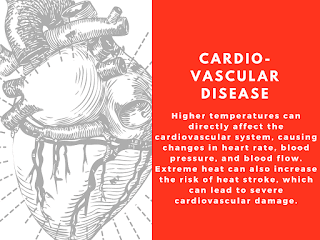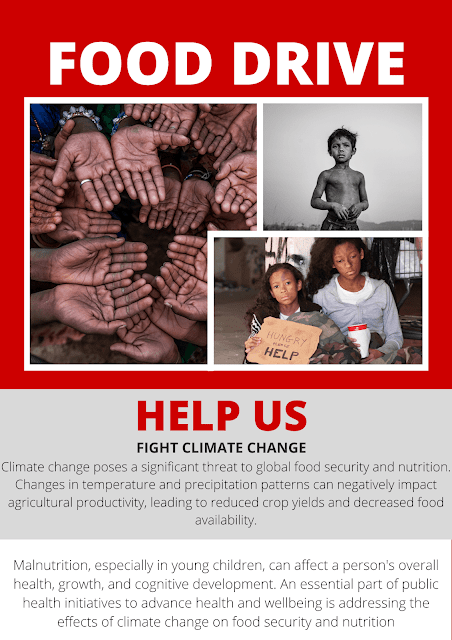The Impact of Climate Change on Public Health: A Growing Concern for Society
Climate change is increasingly becoming a major global challenge, affecting various aspects of human life, including public health. The planet's rising temperatures, changing precipitation patterns, and increasing frequency of extreme weather events are taking a toll on public health. Consequently, it is crucial to understand the impact of climate change on public health and develop strategies to mitigate its risks. This article will discuss the effects of climate change on five key aspects of public health: asthma, cardiovascular disease, heat-related illness and death, malnutrition, and injury and death from natural disasters like hurricanes and tornadoes.
Asthma and Climate Change
Asthma is a chronic respiratory condition that affects millions of people worldwide. It is characterized by inflammation and narrowing of the airways, leading to shortness of breath, chest tightness, coughing, and wheezing. Climate change affects asthma in various ways.
Rising temperatures due to climate change can exacerbate air pollution, particularly ground-level ozone (smog) formation. Ozone is a potent respiratory irritant that can cause asthma attacks and worsen asthma symptoms. Additionally, climate change can lead to longer pollen seasons and higher pollen concentrations, which can trigger allergic asthma in sensitive individuals.
Moreover, an increase in extreme weather events, such as storms and floods, can lead to damp indoor environments and mold growth, which can also exacerbate asthma symptoms. Therefore, climate change poses a significant risk to individuals with asthma and may increase the prevalence of the condition in the future.
Cardiovascular Disease and Climate Change
Cardiovascular disease (CVD), including heart disease and stroke, is the leading cause of death worldwide. Climate change can influence CVD risk factors and outcomes in several ways.
Climate change can also indirectly affect cardiovascular health through its impact on air quality. Increased air pollution, particularly fine particulate matter (PM2.5) and ground-level ozone, has been linked to an increased risk of heart attacks, strokes, and other cardiovascular events.
Moreover, rising temperatures can lead to the expansion of disease-carrying vectors, such as mosquitoes and ticks, which can transmit infectious diseases that can affect the heart, such as Lyme disease and Chagas disease.
Heat-Related Illness and Death
The rise in heat-related illnesses and fatalities is one of climate change's most immediate and obvious effects on public health. In especially in susceptible populations, such as the elderly, children, and individuals with pre-existing health concerns, extreme heat events, such as heatwaves, can result in heat exhaustion, heat stroke, and dehydration.
Heat-related illnesses and deaths are expected to increase as global temperatures continue to rise due to climate change. Urban areas are particularly at risk due to the urban heat island effect, which causes temperatures in cities to be higher than in surrounding rural areas.
To reduce the impact of heat on public health, it is essential to implement heat adaptation strategies, such as early warning systems, cooling centers, and urban greening programs, to protect vulnerable populations and mitigate the risks associated with extreme heat.
Malnutrition and Climate Change
Climate change poses a significant threat to global food security and nutrition. Changes in temperature and precipitation patterns can negatively impact agricultural productivity, leading to reduced crop yields and decreased food availability.
Moreover, climate change can exacerbate the risk of extreme weather events, such as droughts, floods, and storms, which can further disrupt food production and distribution systems. These disruptions can lead to increased food prices, reduced access to nutritious foods, and ultimately, malnutrition.
Malnutrition, especially in young children, can affect a person's overall health, growth, and cognitive development. An essential part of public health initiatives to advance health and wellbeing is addressing the effects of climate change on food security and nutrition.
Natural Disasters and Public Health
The frequency and intensity of natural disasters, such as hurricanes and tornadoes, are expected to increase due to climate change. These extreme weather events can have devastating effects on public health, including injuries, deaths, and mental health impacts.
Natural catastrophes frequently result in population displacement, which raises the risk of infectious disease epidemics and exacerbates already-existing health disparities. Additionally, the destruction of healthcare facilities after natural disasters might restrict impacted populations' access to crucial medical care.
To minimize the public health impacts of natural disasters, it is crucial to invest in disaster risk reduction and preparedness measures, such as early warning systems, resilient infrastructure, and community-based disaster management programs.
In conclusion, climate change has far-reaching implications for public health, affecting various aspects of human health and well-being. To mitigate the impacts of climate change on public health, it is essential to implement comprehensive strategies that address both the direct and indirect effects of climate change on human health, as well as promote climate resilience and adaptation measures for vulnerable populations. By doing so, we can safeguard the health of our communities and future generations in the face of a rapidly changing climate.












0 Comments